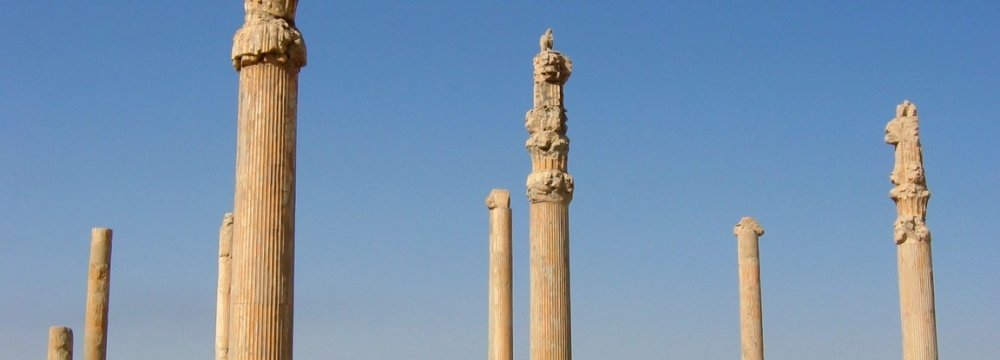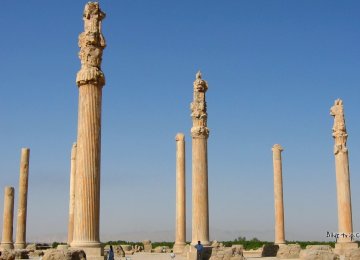Earthquakes and land subsidence are two natural hazards that threaten Takht-e Jamshid (Persepolis), experts warn.
Recent subsidence near Persepolis has prompted experts to specifically investigate the threats that might be associated with such natural disasters, Mehr News agency reported.
The major factors damaging historical monuments are identified as: natural destructive factors and human destructive factors by experts.
A faculty member of the Shiraz University said that excessive withdrawal of water from underground aquifers is a common cause of gradual land subsidence.
“However, sometimes subsidence occurs due to activation of fault lines,” he added.
Abdolmajid Asadi said earthquakes have been the main reason for the destruction of most of the Persepolis pillars so far.
“By allocating funds to locate the next earthquake epicenter, the authorities can take necessary measures to minimize probable damages,” he said.
Ezatollah Raeesi, professor of geology and faculty member at Shiraz University said subsidence occurred during 2007-2009 near Naqsh-e Rustam (located about 12 km northwest of Persepolis).
Main Cause
Reduced underground waters and drought has been identified as the main cause for subsidence in the region, Raeesi added.
In a bid to help prevent subsidence from further deepening, he suggests that withdrawal from underground water resources be restricted, and that subsidence be closely monitored by a precise geodetic network.
“Ground waters need to be preserved,” said Raeesi, adding that if the current trend continues, Persepolis will be in grave danger.
The managing director of the Geology and Mineral Exploration Research Center in the south of the country said that faults can accelerate land subsidence in the region.
As a solution, Tahmoures Yousefi suggested that by conducting geophysical studies, and by means of ground penetrating radars (GPR) and other seismic monitoring equipment, the status of the land can be closely studied to find ways for preventing subsidence in the region.





